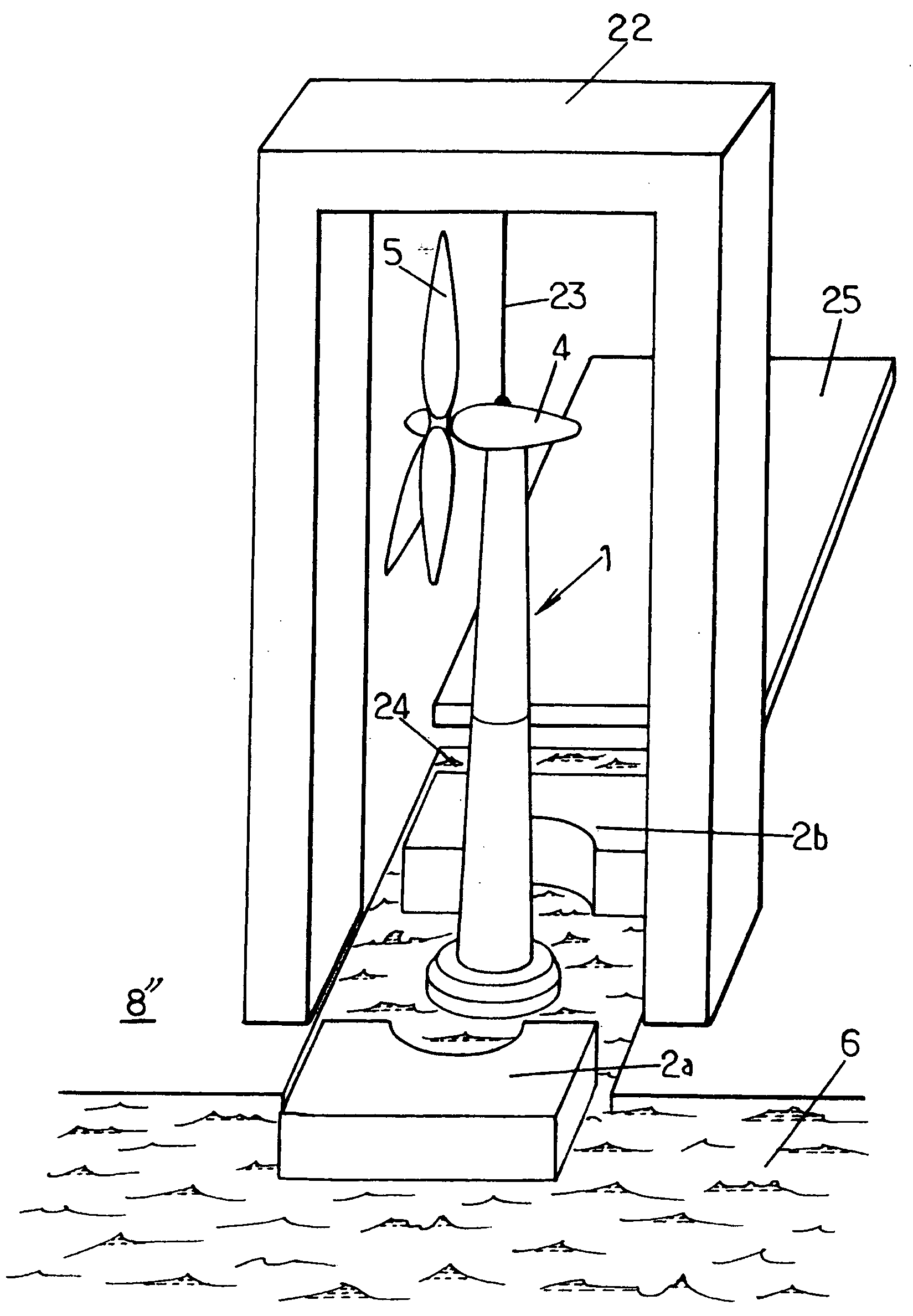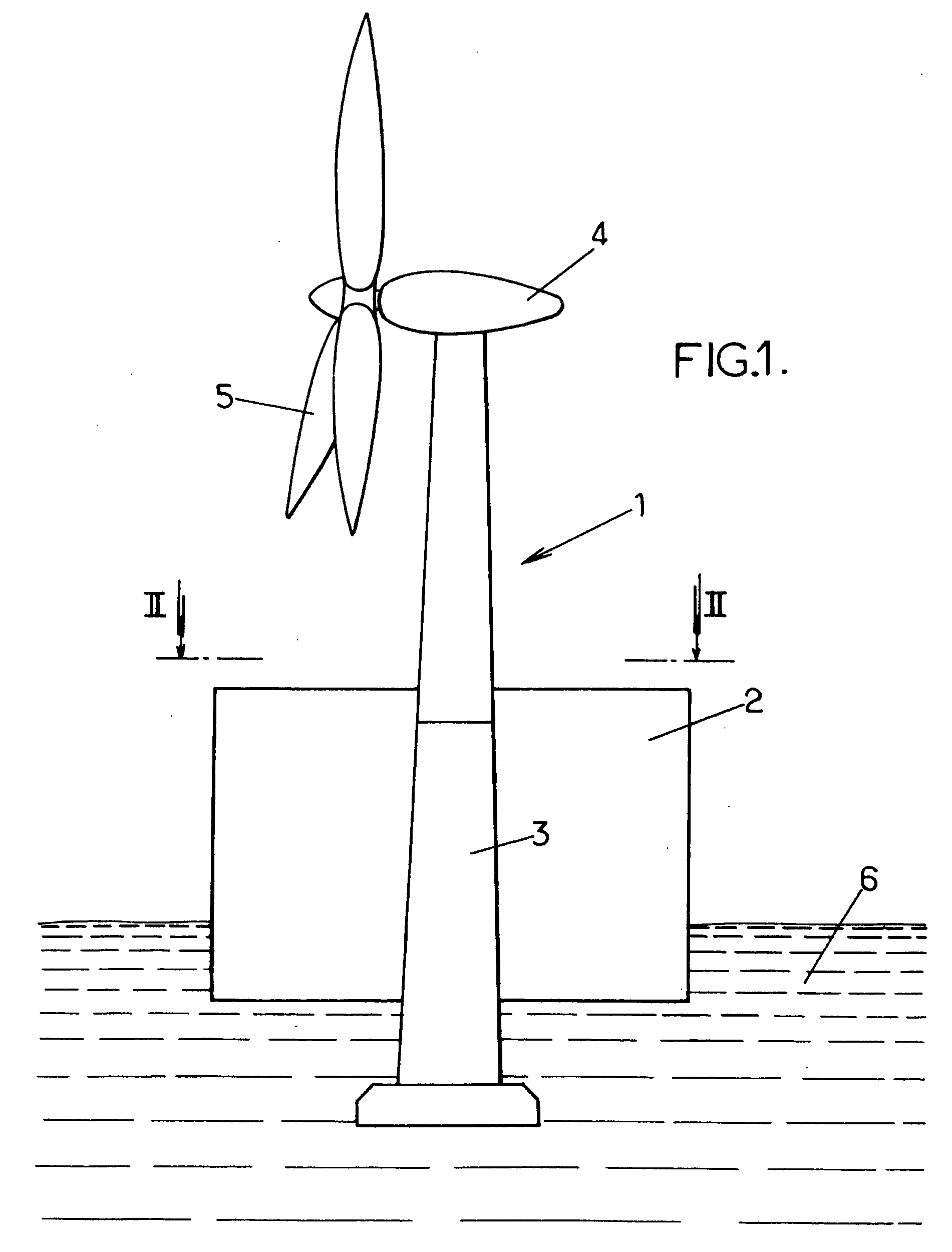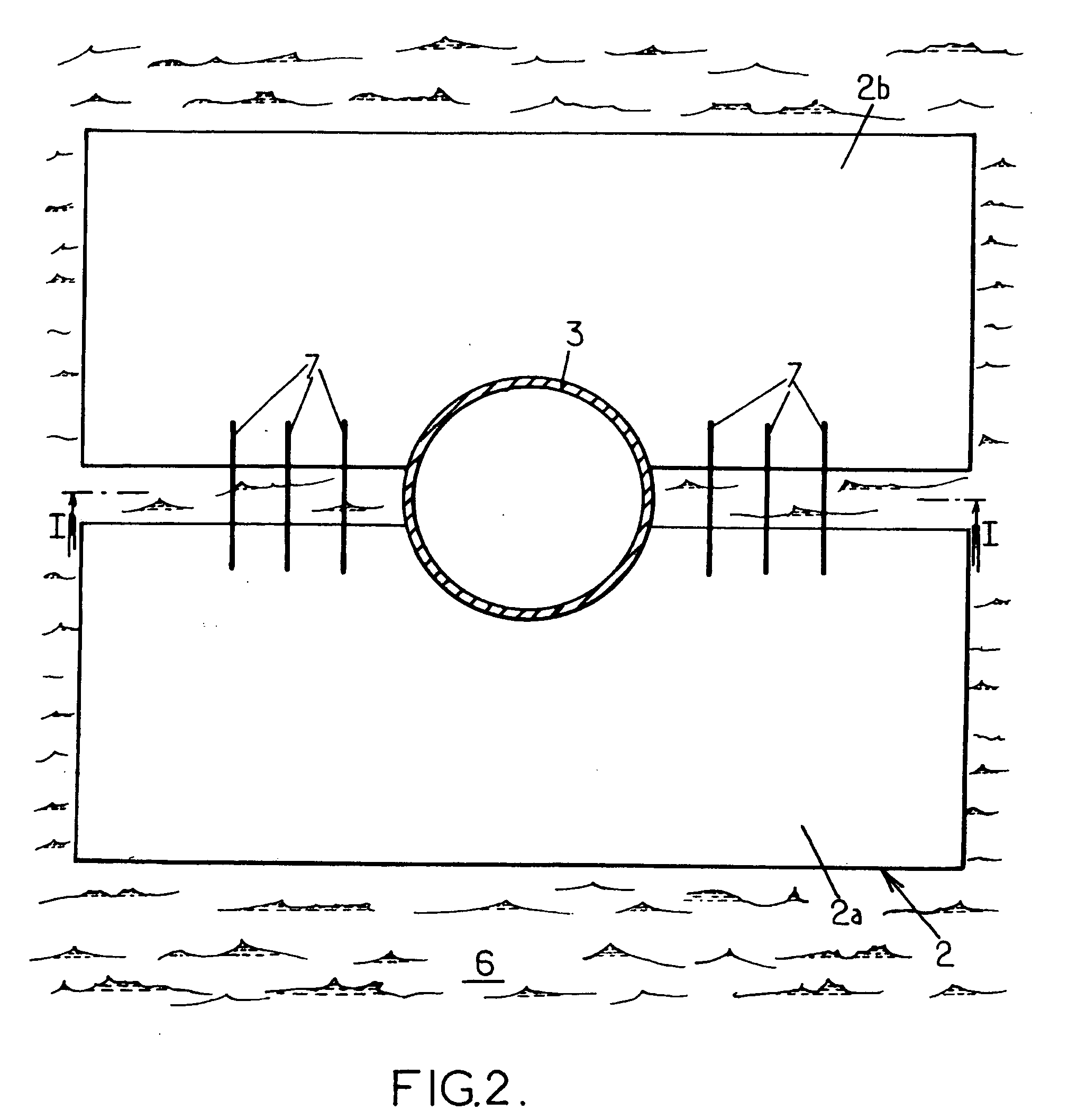Method for the transport of a civil engineering structure in an aquatic medium
a civil engineering and aquatic technology, applied in underwater structures, artificial islands, caissons, etc., can solve the problems of complex and costly work at sea, long work required at sea to assemble the various components still be required to install the civil engineering structure. complex and costly, to achieve the effect of simplifying the subsequent installation of the civil engineering structure, reducing the buoyancy, and being easy to transpor
- Summary
- Abstract
- Description
- Claims
- Application Information
AI Technical Summary
Benefits of technology
Problems solved by technology
Method used
Image
Examples
Embodiment Construction
[0043]An aim of the invention is to transport a civil engineering structure in an aquatic medium, for example at sea. Other aspects of the invention relate to the launching and / or installation of the civil engineering structure in an aquatic medium.
[0044]The civil engineering structure in question may be any type of gravity structure. Advantageously its height is greater than the dimensions of its base. It may for example be an offshore wind generator, that is to say a wind generator which is designed to be located in the open sea.
[0045]The non-restrictive embodiment of an offshore wind generator is more particularly considered below purely for illustrative purposes.
[0046]As shown in FIGS. 1 and 2, a float 2 is associated with a wind generator 1 comprising a lower portion 3 including a base and possibly a metal drum, surmounted by a nacelle 4 incorporating a hub bearing the blades of a rotor 5, to ensure that the wind generator floats stably in the sea. This association may possibly...
PUM
 Login to View More
Login to View More Abstract
Description
Claims
Application Information
 Login to View More
Login to View More - R&D
- Intellectual Property
- Life Sciences
- Materials
- Tech Scout
- Unparalleled Data Quality
- Higher Quality Content
- 60% Fewer Hallucinations
Browse by: Latest US Patents, China's latest patents, Technical Efficacy Thesaurus, Application Domain, Technology Topic, Popular Technical Reports.
© 2025 PatSnap. All rights reserved.Legal|Privacy policy|Modern Slavery Act Transparency Statement|Sitemap|About US| Contact US: help@patsnap.com



